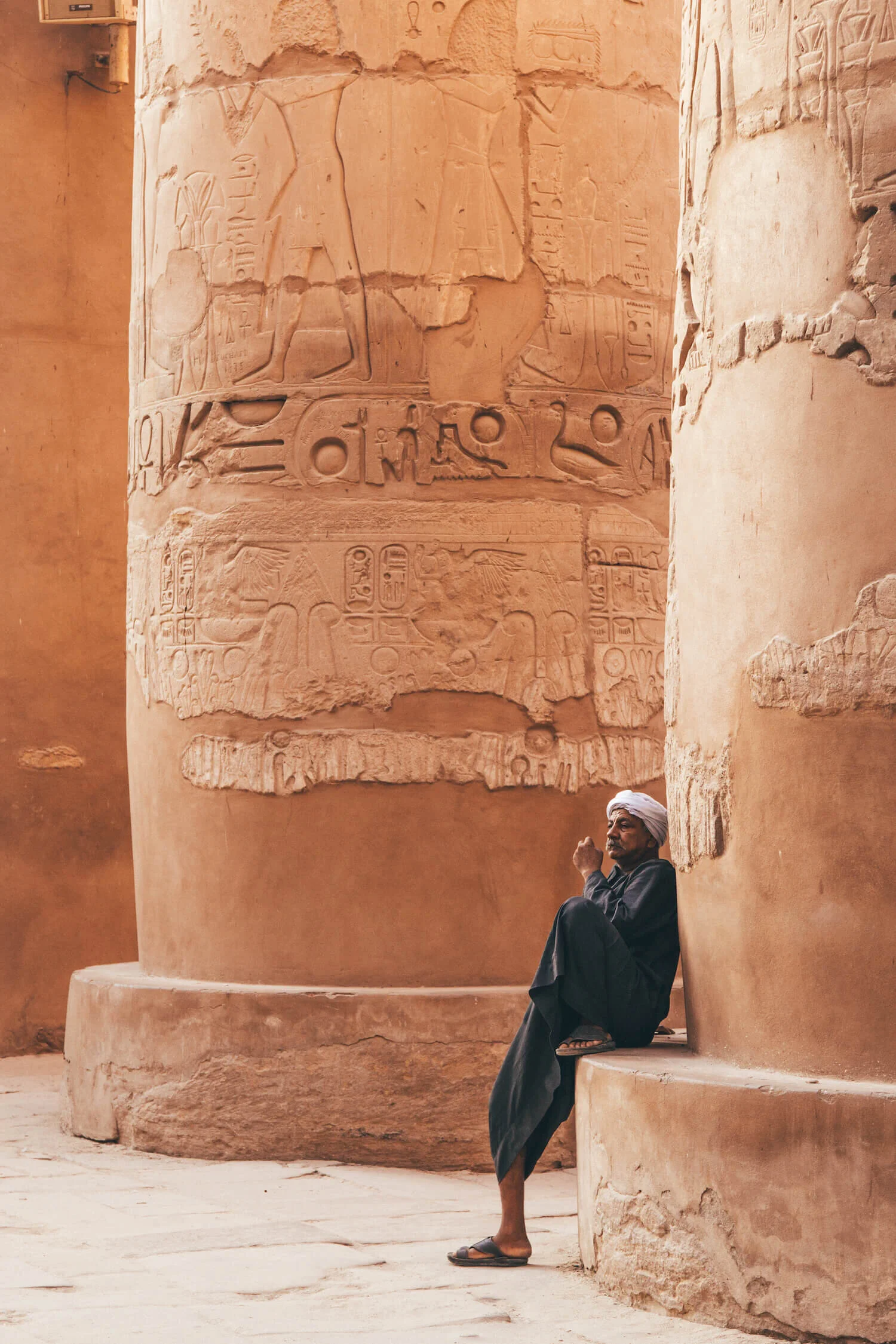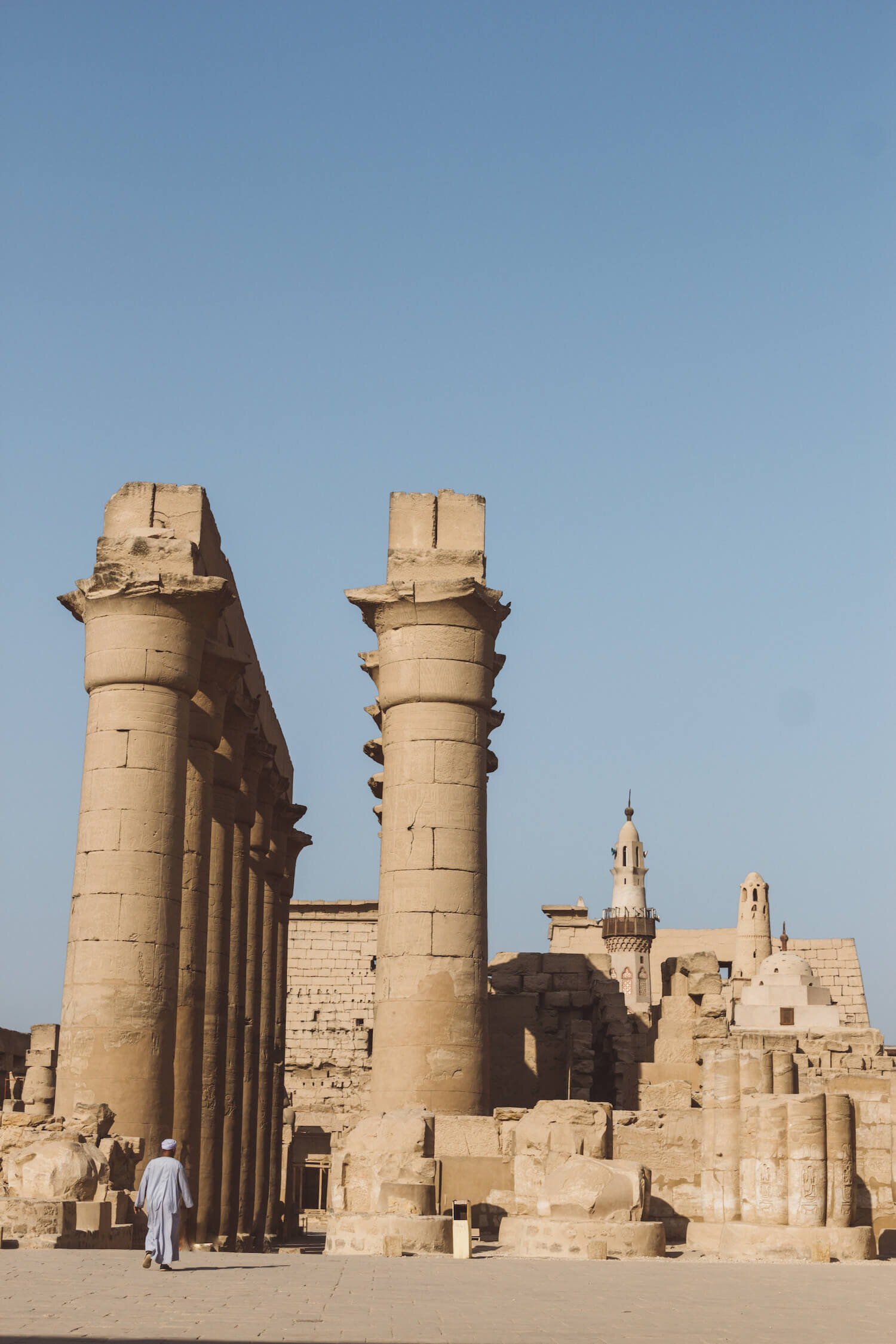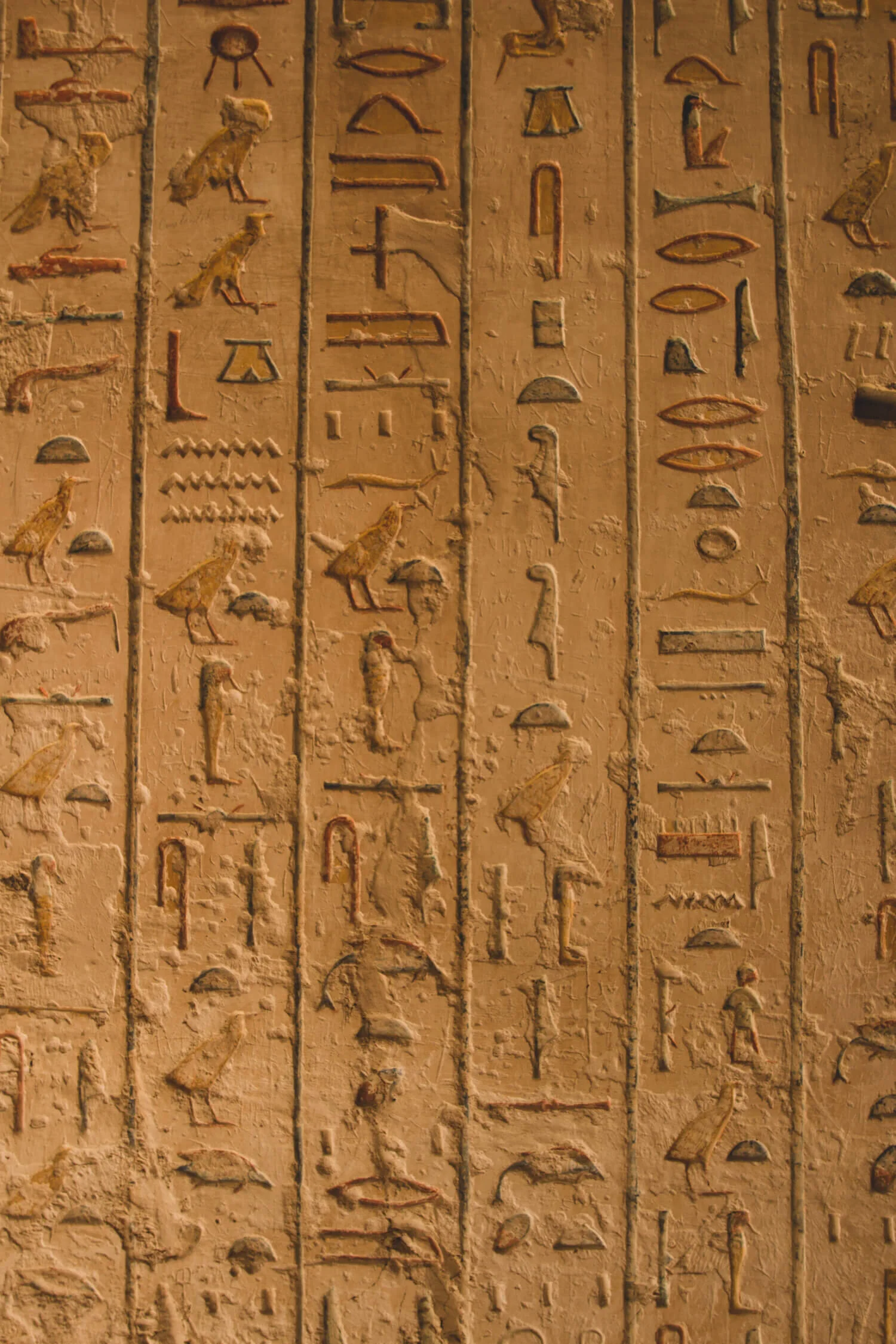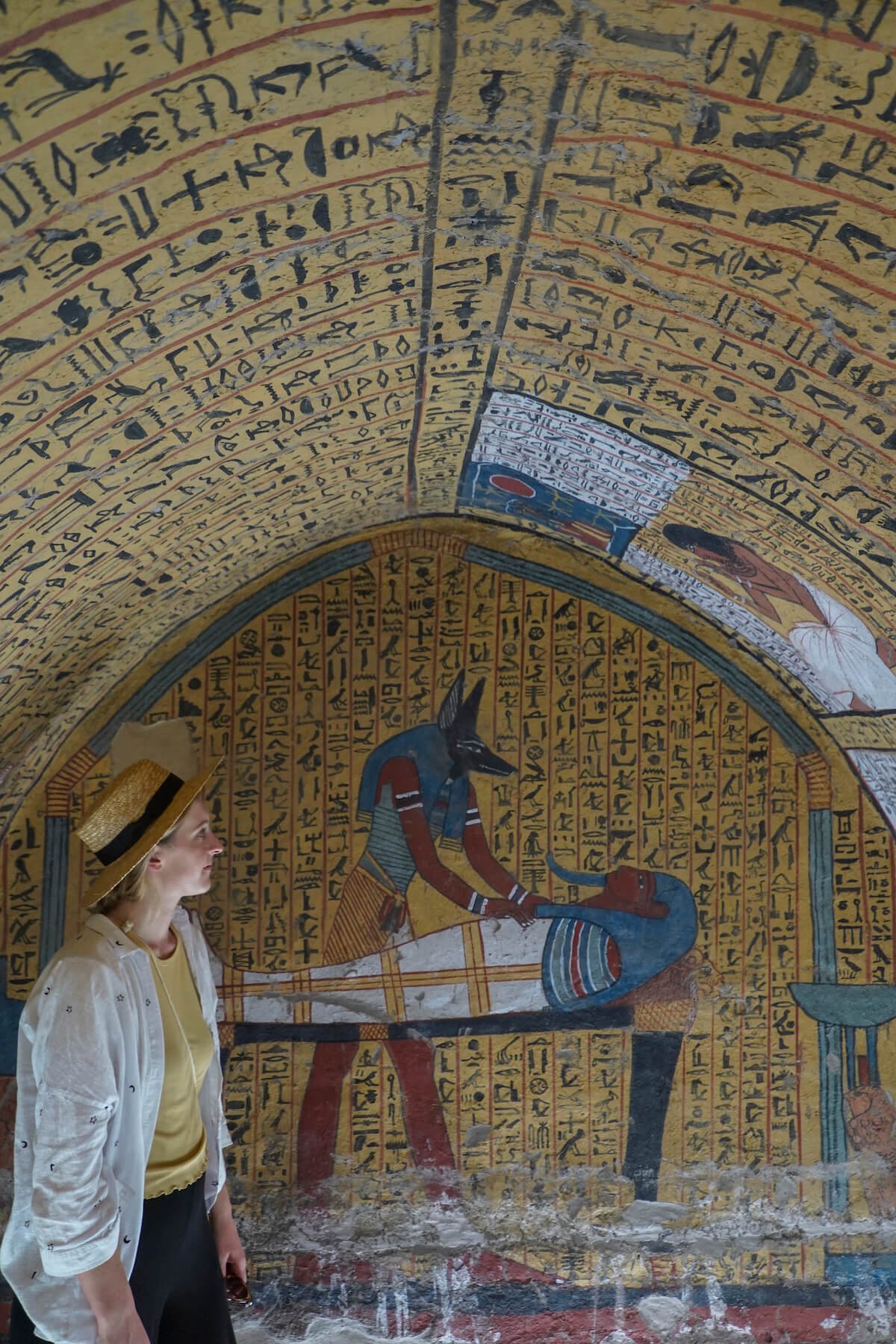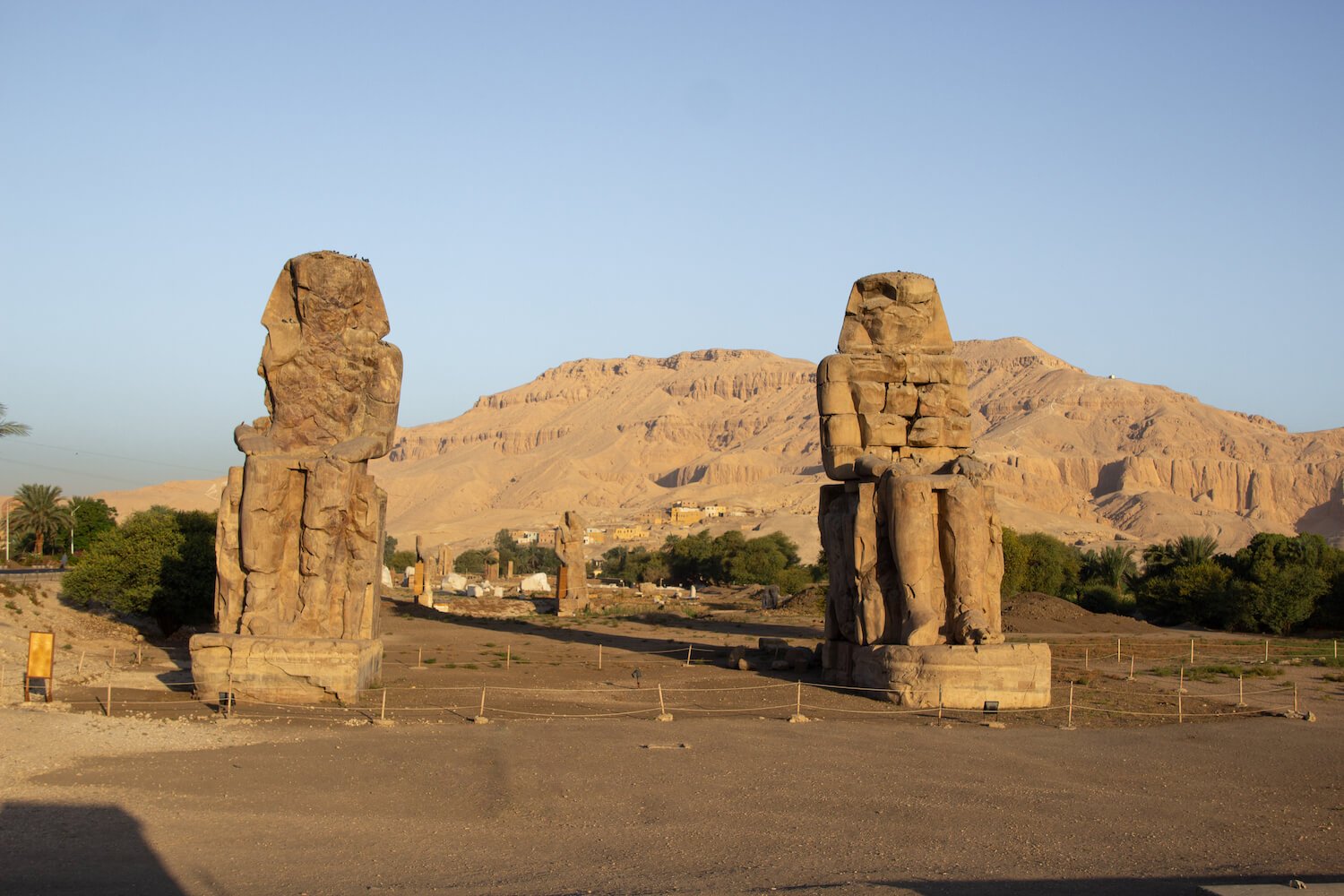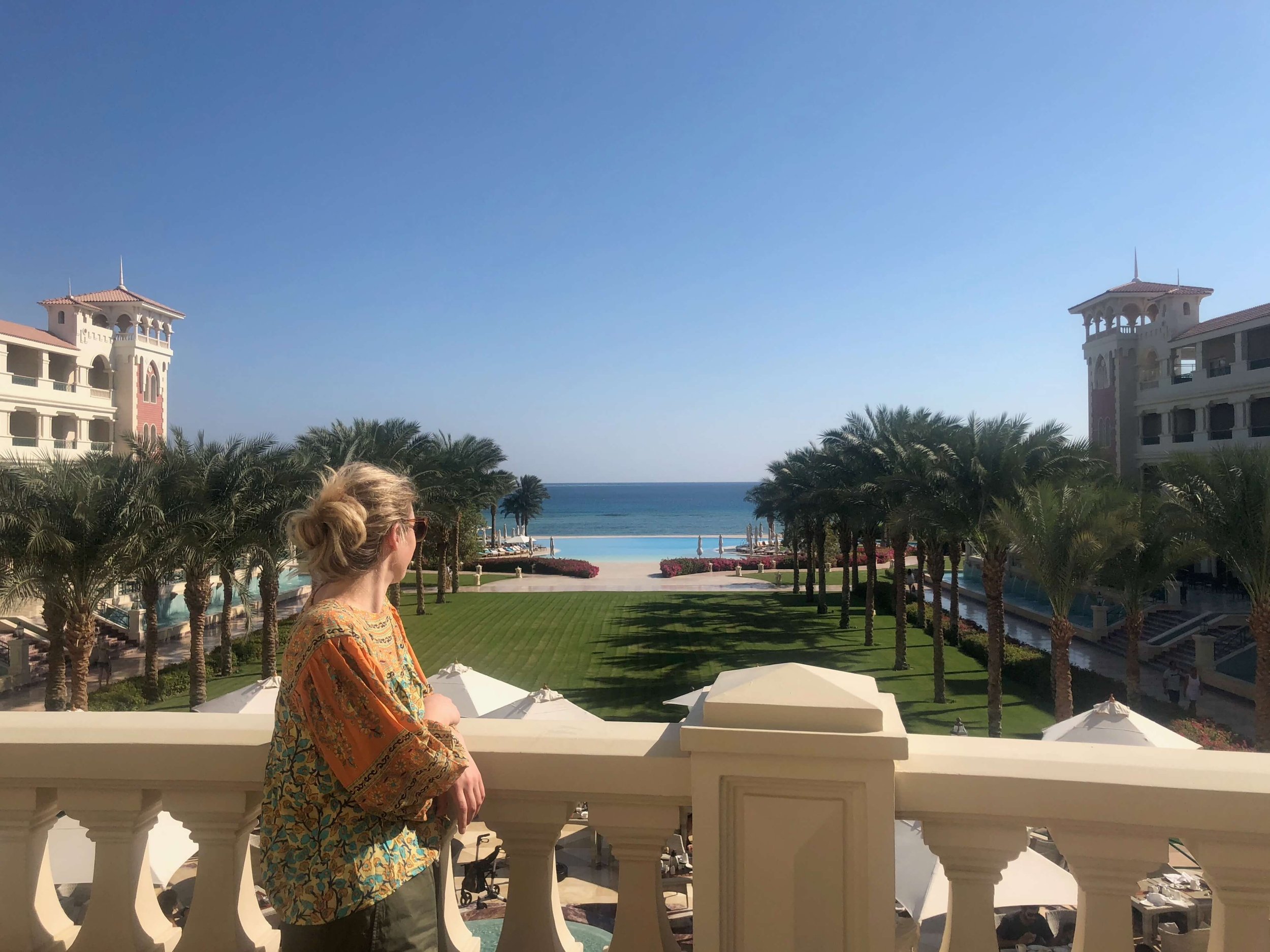Luxor Travel Guide
Luxor is a treasure trove of ancient Egyptian history, culture and architectural marvels. The city is a must-visit for history lovers and adventure seekers alike.
Luxor is located on the site of the ancient capital of Egpyt, Thebes. The city is divided by the Nile River into two areas - the East Bank and the West Bank. The temples were constructed on the East bank as it was believed to be the home of the living, where the sun rises. On the other hand, the West Bank, where the sun sets, was considered the land of the dead, and thus, a necropolis of tombs and funerary complexes were constructed there by the ancient Egyptians.
If you're planning your first trip to this captivating city, here are the best things to do and places to visit that you won't want to miss.
Disclaimer: This post contains affiliate links. If you make a purchase through these links, I earn a commission at no extra cost to you. Thank you for supporting my blog!
Luxor Essentials
Language: Arabic (English is widely spoken)
Currency: Egyptian Pound (EGP)
Best Time To Visit: The best times to visit are from March to April and from late September to November when the weather is comfortable for sightseeing. The hottest months of the year are June to early September, so it’s best to avoid these months.
How To Get There: Luxor International Airport offers direct flights from Cairo daily. Additionally, Luxor can also be reached via train from Cairo and Aswan. The train station is conveniently located in city centre, and from there, you can easily take a taxi to where you need to go. I recommend taking the overnight sleeper train from Cairo to Luxor, as it is a fantastic option for travel.
Getting Around: The best way to get around Luxor is either by taxi or through guided tours that provide transport. If you have to take a regular taxi, it’s recommended to ask about the approximate fare range from your hotel beforehand and to agree on a price with the driver to avoid any misunderstandings.
» Book your guided tour of Luxor to discover the East and/or West Bank for a half or full day.
Travel Tips for Luxor: When visiting Luxor, be prepared for the hot weather and lack of shade cover at most sites. It's important to wear sunscreen and carry enough water when walking around.
The Best Things to Do in Luxor
Discover Karnak Temple
Karnak Temple is the largest temple complex in Egypt. It was the most important temple for a majority of Ancient Egyptian history and was constructed over a period of 2,000 years by several pharaohs. Each new ruler who came into power would add to the temple and expand it. The temple is dedicated to Amun, Mut and Khonsu.
Karnak Temple is one of the busiest attractions in Luxor. We arrived at 6 am, the opening time, and were some of the first groups to enter the site that morning. It was incredibly peaceful and magical to arrive at sunrise. The morning light made it perfect for taking photos in the Hypostyle Hall. The Great Hypostyle Hall, with 134 massive stone columns, is one of the most famous aspects of Karnak. The columns, pylons and surfaces of the temple are decorated with hieroglyphic texts and religious, ritual and battle scenes.
You can easily spend several hours exploring the temples, massive columns, colossal statues, and obelisks. During my visit, we were given an hour to take photographs and explore the site on our own before rejoining the group, led by our Egyptologist guide. He was extremely knowledgeable and passionate, showing us the most interesting spots while sharing the history of the temple.
» Book your guided tour of Luxor to discover the East and/or West Bank for a half or full day.
Visit Luxor Temple
A visit to Luxor Temple is a must during your stay in Luxor. The temple was known as the Southern Sanctuary and was used for the coronations of new pharaohs and other ceremonies. It was constructed over hundreds of years by Amenhotep III, Tutankhamun, Ramses II, and other pharaohs. Ramses II enlarged the temple and built the monumental first pylon that you can see with his colossal statues standing proudly in front. The hieroglyphs on the walls are beautifully preserved and narrate stories of his military expeditions. A giant obelisk made from pink granite also marks the entrance, which is one of a pair; the other one was taken by the French government and is located in the Place de la Concorde in Paris.
Walking through the courtyards and massive columns, you’ll be humbled by the sheer scale of the architecture and intricacy of the carvings.
The Avenue of Sphinxes is a long pathway with sphinxes and ram-headed statues that connect Karnak and Luxor Temples. While some sections of it are still being excavated, two sections of the avenue are open to the public. You can get a good look at the Avenue of Sphinxes from inside Luxor Temple.
If you're an avid photographer, Luxor Temple offers a perfect opportunity to capture stunning images during the golden hours of sunrise or sunset. The temple is open from early morning until late evening, allowing you to visit at the most opportune times. During sunrise and sunset, the temple's magnificent pylons and columns are illuminated in a warm glow, creating a breathtaking spectacle of light and shadows. The extended hours of Luxor Temple give you the chance to capture some unique moments.
Take a Sunset Cruise on a Felucca Boat
When visiting Luxor, taking a sunset cruise on a felucca boat is one of the best experiences that should not be missed. It’s the perfect way to relax after a long day of exploring. A Felucca is a traditional wooden sailboat that is powered solely by the wind, which means that if the wind isn’t strong enough, you’ll simply drift down the Nile. So, it’s important to consider this when planning your felucca ride.
You can easily find a felucca for a sunset cruise from anywhere on the riverside. If you don’t want to haggle with a boatman, there are many operators online that you can book with. If you are adventurous, longer felucca trips to Aswan can also be arranged.
» Book your private felucca boat trip with hotel pickup in Luxor
Explore the Valley of the Kings
The Valley of the Kings is the location of the burial tombs for pharaohs such as Tutankhamun, Seti I and Ramses II, along with powerful nobles over the 18th, 19th and 20th dynasties. The tombs, cut deep into the rock, are an underground system leading to a burial chamber. The walls of the tombs, the narrow corridors and the ceilings are decorated with intricate hieroglyphics and vivid murals. The tombs are well preserved and beautiful to walk through - almost as colourful as the day they were painted!
Our group visited the tombs of Ramses VI, Ramses IX, Ramses III and Merepetah.
Admission: You must buy a general admission ticket at the entrance. This ticket will give you entrance to any three of the regular tombs. If you want to see more tombs, additional separate tickets are required. If you want to take pictures inside the tombs, you will also need to buy a photography ticket.
» Book your guided tour of Luxor to discover the East and/or West Bank for a half or full day.
Temple of Hatshepsut
The Temple of Hatshepsut, at Deir al-Bahari, was built as the mortuary temple of Hatshepsut, a queen who became Pharaoh. Hatshepsut was a remarkable female ruler, and her temple is an incredibly grand and impressive complex. It is a tiered structure built into the limestone rocks and has been almost entirely rebuilt and restored. The terraces were originally filled with exotic plants and lush gardens of frankincense trees.
Hatshepsut was the eldest daughter of Thutmose I and the wife of Pharaoh Thutmose II, her half-brother. After her husband’s death, she acted as regent for her stepson, Thutmose III, but later took on the full powers of a Pharaoh. Hatshepsut ruled Egypt for about 21 years, during which the country had increased trade, jobs and a thriving economy, making her reign prosperous and peaceful. After her death, Thutmose III ascended to the throne as Pharoah and attempted to erase all records of Hatshepsut’s rule from historical documents while defacing all monuments dedicated to her.
Hot Air Balloon Ride At Sunrise
A magical way to start your day is by taking a Hot Air Balloon Ride over Luxor’s West Bank at sunrise. As you ascend into the sky, you have views of the landmarks, including the Valley of the Kings and the Temple of Hatshepsut.
In Luxor, hot air balloons depart from the West Bank at sunrise. You’ll need to wake up before the crack of dawn to get to the balloon launch site. From the East Bank, it required crossing the Nile by boat. There are several hot air balloon companies in Luxor, but I recommend joining this Sunrise Hot Air Balloon Tour with excellent reviews and it includes pickup and drop-off to your hotel.
If you're seeking an unforgettable experience in Luxor, I highly recommend taking on a Hot Air Balloon Ride at sunrise. This was my first ever hot air balloon experience, and I was a little nervous at first. However, once we were up in the sky, my nerves faded away. The sunrise was on the horizon, and the views were incredible! Waking up early was well worth it, and I didn’t retreat a thing.
Immerse Yourself in Ancient History at Luxor Museum
If you want to gain a deeper understanding of Luxor's history, you must visit the Luxor Museum. The museum houses an impressive collection of artifacts from Luxor’s temples and necropolis. Highlights include intricate jewellery, statues, and beautifully preserved reliefs. The exhibits at the museum are expertly curated exhibits that provide a deeper appreciation of Egypt's ancient civilization.
If you are fascinated by the mummification process, then visit the Luxor Mummification Museum to learn about the secrets and processes of preparing for the afterlife. Here, you will find all kinds of mummies, including those of animals such as cats, fish, and crocodiles.
Explore More sites on the West Bank
Deir el-Medina is the ancient village home to the builders, workmen and artisans who worked on the tombs in the Valley of the Kings (and Valley of the Queens). The village had a main street and the houses had stone foundations and mud-brick walls. Tombs of the workers have been discovered on the site and are open to visitors. Due to the dry desert air, the tombs are vibrantly painted and incredibly well preserved. The walls depict scenes of daily life and the people who lived there.
The Colossi of Memnon are two massive stone statues of Amenhotep III that once stood at the entrance of his grand mortuary temple. Unfortunately, only parts of the temple's layout remain because of earthquakes and the annual flooding of the Nile River. The statues are well worth a quick photo stop on the way to the Valley of the Kings.
Medinet Habu is the Mortuary Temple Of Ramses III and is definitely worth a visit. The original paintwork in the temple is in excellent condition and many of the walls are still intact.
The Valley of the Queens is an ancient royal necropolis where the wives of the great pharaohs were laid to rest. Also buried here are princes, princesses, and other family members of the nobility. The tomb of Queen Nefetari has only recently been opened to a very limited number of visitors each day.
The Mortuary Temple of Seti I was constructed by the pharaoh Seti I, who is known for his creation of the famous Hypostyle Hall in Karnak. Despite its picturesque location surrounded by beautiful palm trees, this temple is not as popular as others and is often skipped by tour operators. However, if you are lucky enough to visit, you’ll likely have the pleasure of being the only one here, as it is often deserted.
Nile River Cruise from Luxor
There are several Nile Cruises that operate between Luxor and Aswan, which typically take three to four days. During the cruise, you’can enjoy sailing down the Nile and take in views of lush green banks, temples, and daily village life. The journey includes stops at Esna, Edfu and Kom Ombo.
There are different types of vessels available, from traditional dahabiyas and paddle steamers to modern cruise ships with luxurious amenities. A dahabiya is a large wooden sailing boat that uses wind power, offering a simple yet elegant experience. On the other hand, modern cruisers are much larger and can accommodate more travellers, with some even having swimming pools on the sun deck. Before selecting your operator, be sure to find out what's included.
Whether you’re marvelling at the ancient temples or simply taking in the ever-changing scenery, Nile River cruises from Luxor offer an unforgettable experience.
Day Trips from Luxor
Visiting Dendera and Abydos Temples on a day trip from Luxor is a great experience.
At Dendera, you can see the breathtaking Temple of Hathor, dedicated to the goddess of motherhood and fertility. The temple features an impressive hypostyle hall with detailed hieroglyphics and beautifully decorated blue ceilings. Next, you can head to Abydos, where you’ll find the remarkable Temple of Seti I. This massive temple is adorned with remarkable wall carvings, including the famous Abydos King List, which chronicles the names of Egypt's earliest pharaohs. Exploring these two ancient temples within a single day will leave you in awe of the ancient civilisation that once flourished along the Nile.
The temples are located north of Luxor and typically require a full day to visit both sites, with most of the day spent driving.
Where To Eat in Luxor
Sofra Restaurant & Cafe ($$, Middle Eastern cuisine)
Al-Sahaby Lane Restaurant ($$, Middle Eastern cuisine) - has a roof terrace overlooking Luxor Temple
Where To Stay in Luxor
Bob Marley Luxor Hostel ($) - Great hostel with air-conditioned dorm rooms and a rooftop terrace.
Nefertiti Hotel ($) - Comfortable rooms with air conditioning.
Pavillon Winter Hotel ($$) - Great mid-range hotel overlooking the Nile.
Hilton Luxor Resort & Spa ($$$) - Luxurious hotel with an infinity pool and spa facilities.
Sofitel Winter Palace Luxor ($$$) - An elegant and historic hotel on the bank of the Nile.
Al Moudira Hotel ($$$) - A beautiful property with oriental architecture and décor, as well as an outdoor pool.






